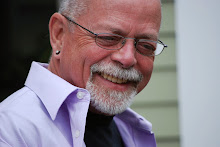Sunday, April 24, 2011
Getting to safety (2)
I don’t remember being bullied for being gay when I was a kid, but I do remember being given a hard time because I was a sissy. This happened when I was less than ten. I was pretty and wasn’t any good with a ball on the playground, and other boys didn’t want me on their side.
The cruelty never got very bad. What was the worst was my realization that the other guys on the playground pitied me for not being more like a boy, which meant for not being able to play games with balls. In grammar school, I don’t think any of us knew what being a “sissy” was, if it had to do with more than the failure to play games with balls.
I was aroused by men before I was ten—my dick got hard—but I didn’t know what caused it, and I didn’t know what to call it. I don’t think there was a sexual component to my treatment on the playground. Before about ten, it was all about gender.
Later, I figured out that getting hard was always caused by the same thing—some man or boy—and even later I found out what to call it.
In high school, what had been called “sissy” in grammar school was called “queer,” or “faggot.” There was a sexual component, and people knew what it was.
Whether the word was “sissy” or “queer,” or “faggot,” I understood during those early years that I was failing at some basic requirement of being what I was supposed to be. I didn’t know exactly what the requirement was—I knew it was bigger than merely playing ball—but I did know I was failing at it.
Attempts to help teenagers, who are being bullied or treated cruelly, with programs like It gets better, are not addressing the whole problem. Children are being treated cruelly over gender/sexuality issues a long time before they get to high school.
See Race Point Light, at Stonewall Triptych.
The cruelty never got very bad. What was the worst was my realization that the other guys on the playground pitied me for not being more like a boy, which meant for not being able to play games with balls. In grammar school, I don’t think any of us knew what being a “sissy” was, if it had to do with more than the failure to play games with balls.
I was aroused by men before I was ten—my dick got hard—but I didn’t know what caused it, and I didn’t know what to call it. I don’t think there was a sexual component to my treatment on the playground. Before about ten, it was all about gender.
Later, I figured out that getting hard was always caused by the same thing—some man or boy—and even later I found out what to call it.
In high school, what had been called “sissy” in grammar school was called “queer,” or “faggot.” There was a sexual component, and people knew what it was.
Whether the word was “sissy” or “queer,” or “faggot,” I understood during those early years that I was failing at some basic requirement of being what I was supposed to be. I didn’t know exactly what the requirement was—I knew it was bigger than merely playing ball—but I did know I was failing at it.
Attempts to help teenagers, who are being bullied or treated cruelly, with programs like It gets better, are not addressing the whole problem. Children are being treated cruelly over gender/sexuality issues a long time before they get to high school.
See Race Point Light, at Stonewall Triptych.
